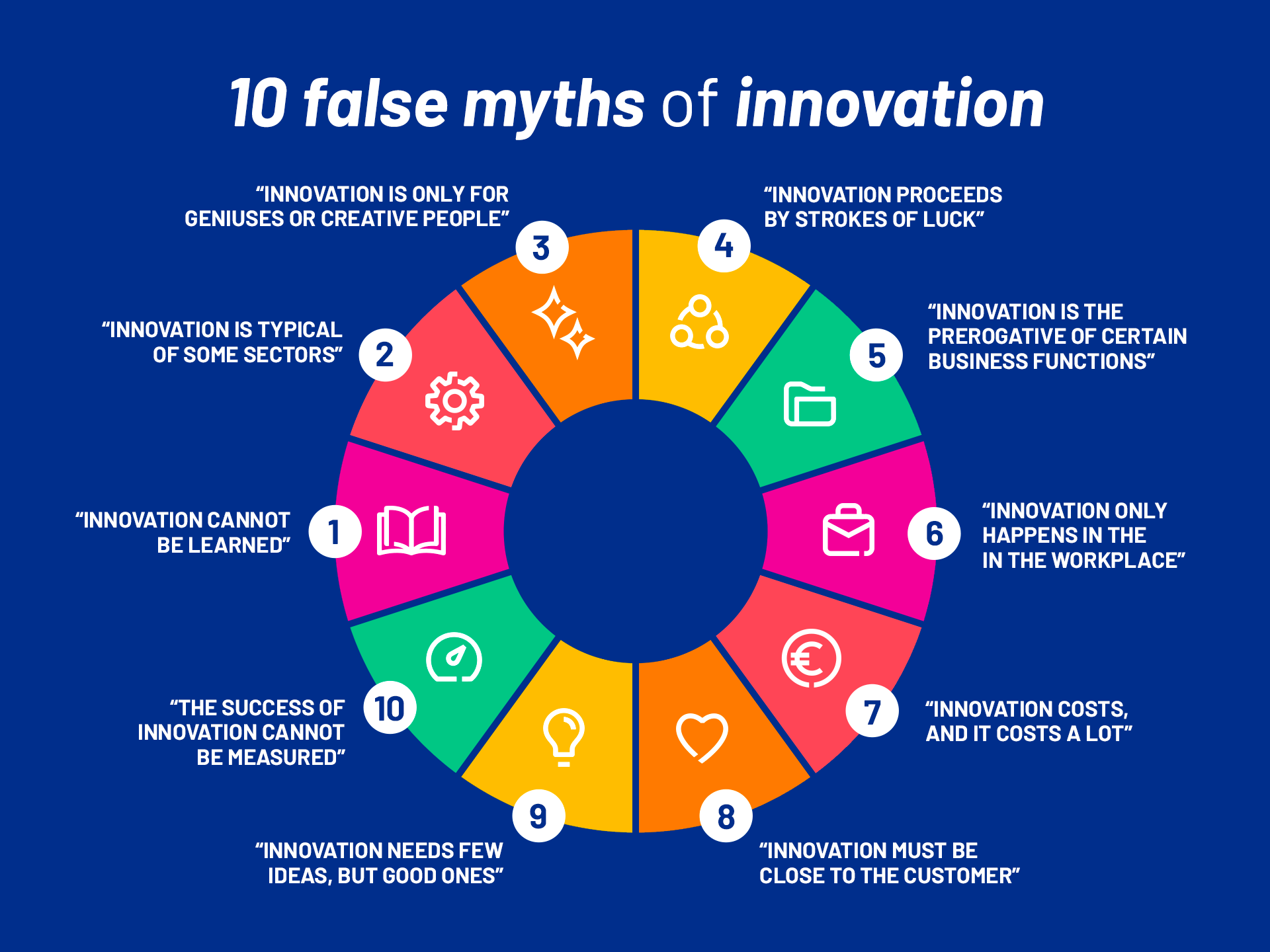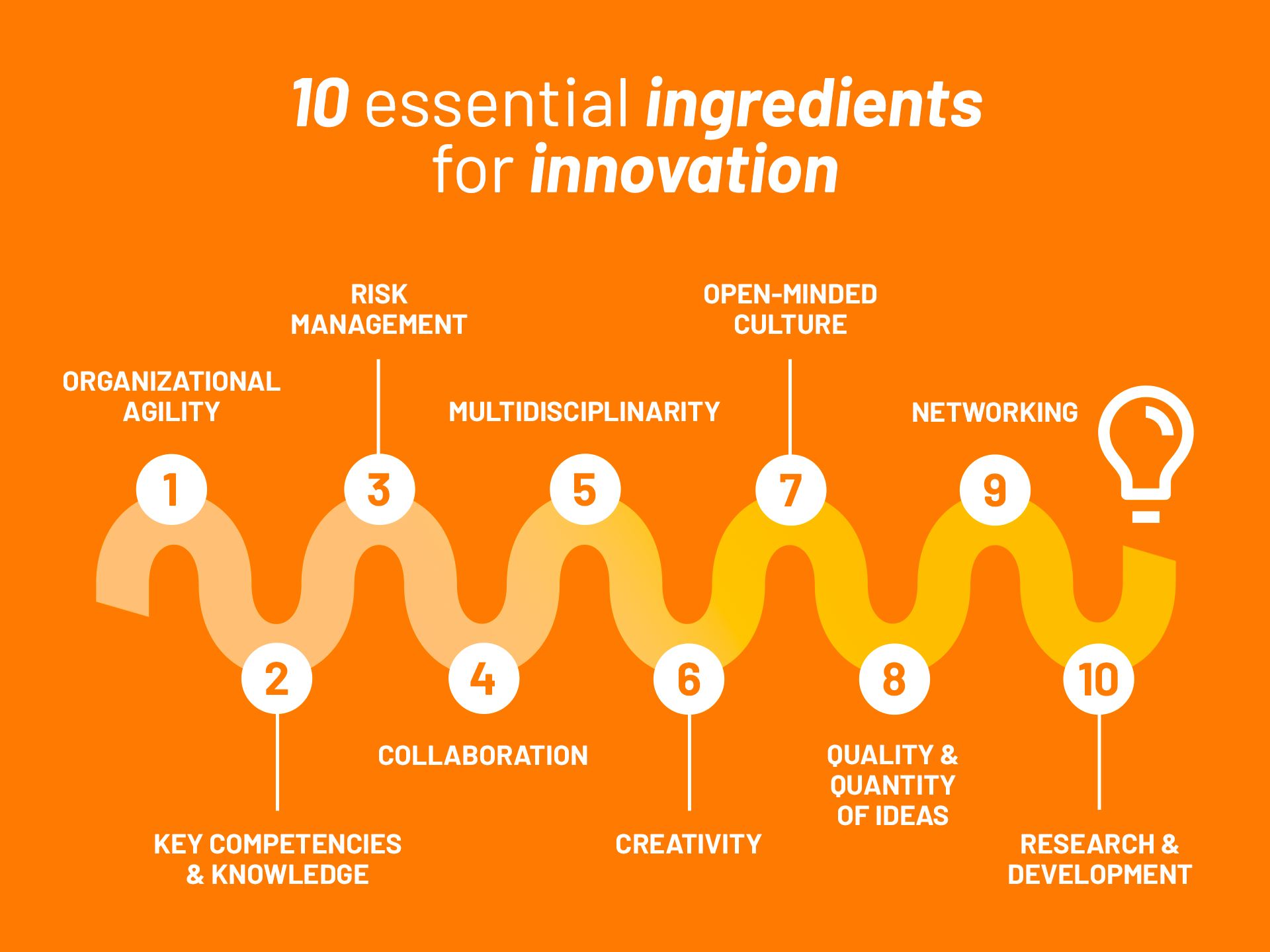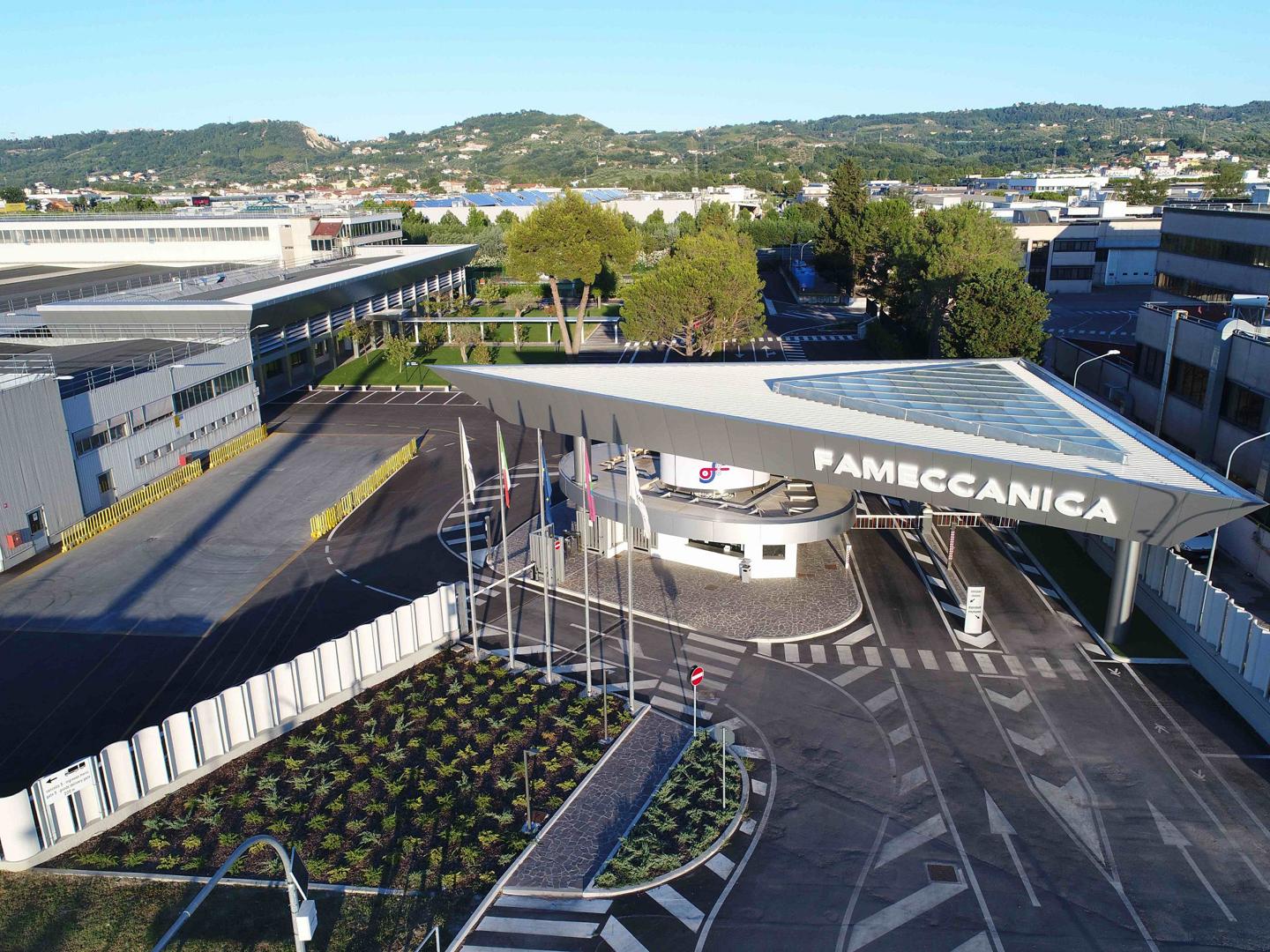The decalogue unmasking innovation myths
Share
The terms innovation and invention are not synonymous. But it is clear that there is a certain semantic interdependence between these two words. In some cases, innovation corresponds to a critical evolution of the existing, the reorganization and optimization of what is known. In others, to innovate means to navigate unknown waters in search of disruptive ideas and solutions.
But why is innovation constantly associated with breaking norms?
The answer is simple: norms are often rooted in established patterns of thought, habits and traditions that have stood the test of time. Challenging these certainties means inviting people to embrace what they do not know or know little about.
The transition from an established model to a new one can create uncertainty and induce "resistance," but it is from this tension that progress originates. Embedded in the diatribe between stability and change are a number of false myths related to the phenomenon of innovation.
The following are the 10 most common.
"Innovation cannot be learned" - FALSE MYTH #1
This statement can be interpreted in a variety of ways, but its limitation is obvious: it is usual to standardize learning processes. But innovation implies the ability to think creatively; it requires pushing beyond established patterns. In short: innovating is a process that can be studied, understood, learned by cultivating skills and developing an environment conducive to changing the status quo.
Innovation is typical of some sectors - FALSE MYTH #2
Innovation means having the ability to intercept and satisfy new needs. To achieve this, it is essential to overcome the conception of innovation as the exclusive prerogative of the high-tech world and its surroundings. It is a dynamic phenomenon that can manifest itself in a variety of ways and in different areas. One can innovate even in mature and traditional sectors by adopting approaches that encourage and nurture a culture open to change and acceptance of risk.
Innovation is only for geniuses or creative people - FALSE MYTH #3
Innovation is collective, collaborative, cross-contaminated, and a multidisciplinary process that requires time and teamwork. Suffice it to say that since 1992 the Nobel Prize in Physics has no longer been awarded to a single individual, but to a team of collaborators. A clear sign that progress always and forever requires synergy and combination of different efforts and skills.
Innovation proceeds by strokes of luck - FALSE MYTH #4
It is a fact: luck inevitably plays a role in innovation, but it is not the determining factor. Innovation is the result of a complex process that advances through incremental and measurable steps, involving several variables and conditions. Luck touches even the innovation leaders in the market, such as Apple and Toyota, but to be able to register one patent after another, you need, first of all, method and skills. The key is to be able to turn innovation into a well-structured internal process that can create significant business value even in seemingly adverse situations.

Innovation is the prerogative of certain business functions - FALSE MYTH #5
Innovation is a shared responsibility. Although departments such as Research & Development, Marketing and Digital, may be more directly involved in innovative activity, it is important to recognize that innovation is a process that can affect multiple areas and departments within an organization and even extend outside of it. You can innovate "in-house" organically, with a bottom-up approach, or by looking outward in an open manner through collaborations, synergies, and investments, knocking on the door of entities that have innovation as their core business.
Innovation only happens in the workplace – FALSE MYTH #6
For innovation, every moment is good; there is no ideal moment.
Innovating is an activity that knows no fixed place: we can innovate in the most diverse contexts and situations, such as during an informal meeting, in the midst of casual conversation, outside the office walls, or in the car during the home-work commute (remembering to change the route often, to keep our "learning agility" trained!).
Innovation costs, and it costs a lot - FALSE MYTH #7
Innovation can require considerable financial resources, especially when it comes to traditional industries such as automotive or pharmaceuticals. But the landscape is changing. In the world of digital innovation, it is possible to develop new ideas in an agile way and with lower costs. How? By using prototypes and following a step-by-step approach, which allows companies to quickly test their innovations and adapt them based on feedback gathered along the way, involving multiple stakeholders in the innovation activity.
One should flirt with all technologies, but marry none of them.
In this context, flexibility becomes a characteristic that organizations, as well as individuals, cannot do without. Being flexible means being in favor of experimentation, but also being able to adapt quickly to changing market needs while reducing potential financial risk.
Innovation must be "close to the customer" - FALSE MYTH #8
If I had asked my clients what they wanted, They would have responded a faster horse."
Within an innovative process, the customer represents the destination to reach, not the compass with which to move. Innovation means being able to listen, suggest, and, above all, anticipate needs that are still unexpressed or undefined, and therefore still "unknown" to future customers and consumers.
Innovation needs few ideas, but good ones - FALSE MYTH #9
Innovation means working simultaneously on the quality and quantity of ideas. The innovation process should be constantly nourished, keeping in mind that over 90% of ideas may prove to be unproductive.
Failure is part of innovation.
In this context, to achieve the 10% of value, it is essential to adopt a "tech-flirting" approach (meaning engaging with and experimenting with as many new digital technologies as possible without committing to any of them) and maintaining a high level of intellectual honesty in abandoning unpromising ideas.
The success of innovation cannot be measured - FALSE MYTH #10
But how to choose which ideas to discard? The basic assumption is that the return on investment (ROI) for an idea is measurable. In this context, the evaluation criteria and measurement of the strategic weight of the idea itself play a crucial role. In the field of innovation, strategic questions must go beyond the standard definition of profit and should include other elements of judgment (reputational, strategic positioning, opportunities, etc.). It's essential to always ask what is the risk associated with the decision not to embrace an innovative idea ("What if not?").

Innovating and discovering means seeing what everyone has seen, but thinking what no one has thought.
Whatever form it takes, from drug repurposing to automation technologies, innovation is about approach, mindset and collaboration across different functions within an organization. And Angelini Industries knows this well. Innovation is, in fact, one of the four founding values of our Charter of Values, which inspire and guide all the choices, actions and interactions to which Our Group gives life on a daily basis. The goal is to instill a mindset centered on the culture of idea generation, enhancing and creating a connective tissue among the different souls that distinguish a multifaceted and multidisciplinary reality that lives for the development of people's holistic well-being.
 Angelini Industries
Angelini Industries




